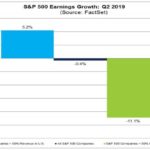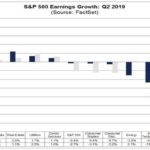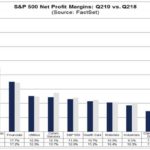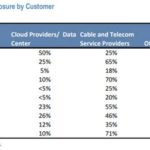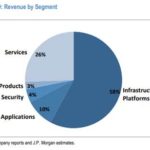Current Price: $139 Price Target: $150
Position size: 6.3% TTM Performance: 38%
Microsoft reported solid Q1 results, beating street high estimates on both revenue and EPS. Street is at the high end of Q2 guidance. The beat was broad based with better than expected growth in all segments. Cloud continues to be the key driver. Q1 revenue was $33B (+14% YoY) and EPS was $1.38 (+21%). Commercial Cloud business was up 39% constant currency and saw continued margin improvement, helping to drive op income up 27%. Counted w/in that is Azure, which was up 63% constant currency. They are taking share from Amazon’s cloud offering, AWS. This should continue as they are better positioned as more large enterprises, that are longtime customers, move to the cloud. Given their enterprise customer base, recent partnerships with SAP, VMware and Oracle, and superior Azure hybrid architecture, the company is uniquely positioned to capitalize on the growing demand for cloud services.
Key Takeaways:
· FY 2020 revenue guided to up double-digits and op margins are expected to increase slightly.
· Solid growth across all 3 segments:
o Productivity & Business Processes, up 13% YoY, $11.1B – driven by strong performance in Office commercial and LinkedIn
o Intelligent Cloud, up 27% YoY, $10.8B – driven by continued strong growth in Azure
o More Personal Computing, up 4% YoY, $11.1B.
· Q1 Commercial Cloud (consisting of O365 Commercial, Azure, Dynamics Online, and LinkedIn Commercial – this includes some revenue from the first two segments above) was $11.6B, up 39% constant currency in the quarter.
· Within Commercial Cloud, Azure growth was +63% YoY constant currency vs. +68% last quarter. That suggests annualized revenue of ~$17B.
· Recently announced partnership with SAP makes Azure the preferred destination for every SAP customer.
· Commercial Cloud gross margins improved 400bps YoY and 100bps sequentially, driven by material improvement in Azure gross margin. Incremental cloud revenues have very high margins and should continue to drive margin expansion.
· Surface Duo – new Android-based dual-screen phone to be available next fall. Could be a promising re-entry into phone space after epic Nokia failure, but w/ Android OS instead of Windows.
Valuation:
· Trading at a 3-4% FCF yield –still reasonable for a company with double digit top line growth, high ROIC and a high and improving FCF margins.
· They easily cover their 1.5% dividend, which they have been consistently growing.
· Strong balance sheet with about $137B in gross cash, and about $51B in net cash.
Investment Thesis:
· Industry Leader: Global monopoly in software that has a fast growing and underappreciated cloud business.
· Product cycle tailwinds: Windows 10 and transition to Cloud (subscription revenues).
· Huge improvements in operational efficiency in recent quarters providing a significant boost to margins which should continue to amplify bottom line growth.
· Return of Capital: High FCF generation and returning significant capital to shareholders via dividends and share repurchases.
$MSFT.US
[tag MSFT]
Sarah Kanwal
Equity Analyst, Director
Direct: 617.226.0022
Fax: 617.523.8118
Crestwood Advisors
One Liberty Square, Suite 500
Boston, MA 02109



